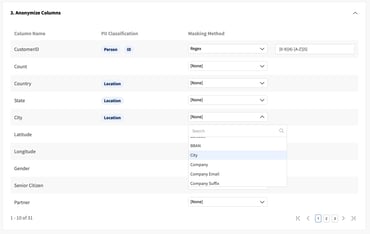With the astonishing amount of data being collected and processed nowadays, privacy and security have become a significant concern for both individuals, organizations, and governments. Ensuring the privacy of sensitive and personal information was never more detrimental for the adoption of AI solutions, with Privacy Engineering arising as a crucial role.
Privacy Engineering encompasses several aspects along the process of designing systems or applications that guarantee privacy protection throughout their implementation and application. These may include the following:
- Risk Assessment: Investigating and signaling possible privacy breaches or security vulnerabilities during systems’ development and deployment;
- Development of Privacy-Enhancing Technologies: Devising appropriate strategies to mitigate privacy threats and vulnerabilities, resorting to strategies such as the use of synthetic data, differential privacy, or homomorphic encryption solutions, and guaranteeing safe data-sharing between or within organizations;
- Data Protection: Designing solutions for safe data management, ensuring that sensitive information is protected along its entire lifecycle, from collection to transmission, processing, and usage, which also includes preventing unauthorized or malicious access;
- Creation of Privacy Policies and Evaluation of Regulation Compliance: Formulating and implementing internal privacy policies that outline the organization’s approach regarding data privacy, while ensuring those policies are compliant with current privacy regulations such as the General Data Protection Regulation (GDPR) and the California Consumer Privacy Act (CCPA);
- Data Privacy Literacy: Alerting for potential privacy issues within organizations and educating towards best practices in data protection, secure data management, and privacy-enhancing techniques.
Among the listed components, privacy-enhancing techniques have been growing in interest, especially as organizations are starting to understand how leveraging Synthetic Data can help them overcome the great majority of challenges posed by data privacy requirements.
Synthetic Data refers to data that is artificially generated (i.e., created by a computer algorithm) rather than collected from real sources. It is designed to resemble real data in terms of its statistical properties, such as data distribution, feature’s correlations, and other dependencies, and yet, it does not contain any identifiable information about individuals,
For this reason, the use of synthetic data has several benefits for organizations:
- Data Sharing: Enabling data protection and privacy, synthetic data allows organizations to share, analyze, and take full advantage of availabole data without risking the disclosure of sensitive information. This is particularly relevant in applications such as healthcare or finance, as medical records and financial transactions cannot be shared or analyzed without proper protection;
- Machine Learning Development: Synthetic Data can be used to train and test machine learning algorithms, which is fundamental to ensure that models deployed to production are accurate, actionable, and generalizable for real data, without compromising the privacy of the original data. Furthermore, synthetic data can be used as a way of enriching data (e.g., via data augmentation), beyond the privacy-protection wall it provides;
- Compliance with Regulations: Since synthetic data is artificially-generated data, it does not qualify as personal data, meaning that regulations such as GDPR do not apply. In this way, Synthetic data can hold real data value, providing the same information of real data while alleviating the challenges of regulation compliance;
- Evaluation of Privacy-Enhancing Techniques: Synthetic data can be used to test other strategies, such as differential privacy and homomorphic encryption, to determine whether they provide the desired level of privacy protection and do not have collateral consequences (e.g., data leakage, decreased data utility).
Synthetic Data can be generated using various methods, such as random sampling, perturbation, and generative models. The choice of method depends on the type of data at hand and the desired properties of the synthetic data. Random sampling is a simple and fast method for generating synthetic data, but it may not preserve the dependencies and correlations in the data. On the other hand, perturbation methods such as differential privacy add random noise to the data to preserve privacy while keeping some of the statistical properties of the data. Finally, generative models, such as Generative Adversarial Networks (GANs) and Variational Autoencoders (VAEs), can generate synthetic data that is more similar to real data, but require more computational resources and training data.
YData Fabric enables the generation of synthetic data through their custom synthetizers, where artificial data is measured against three important pillars: privacy, fidelity, and utility. In such a way, Fabric guarantees that the newly generated data does not leak any real data information, preserves the original data value, and performs well when used in a downstream machine learning application.
Try out YData Fabric today and start leveraging the potential of synthetic data in your organization.



